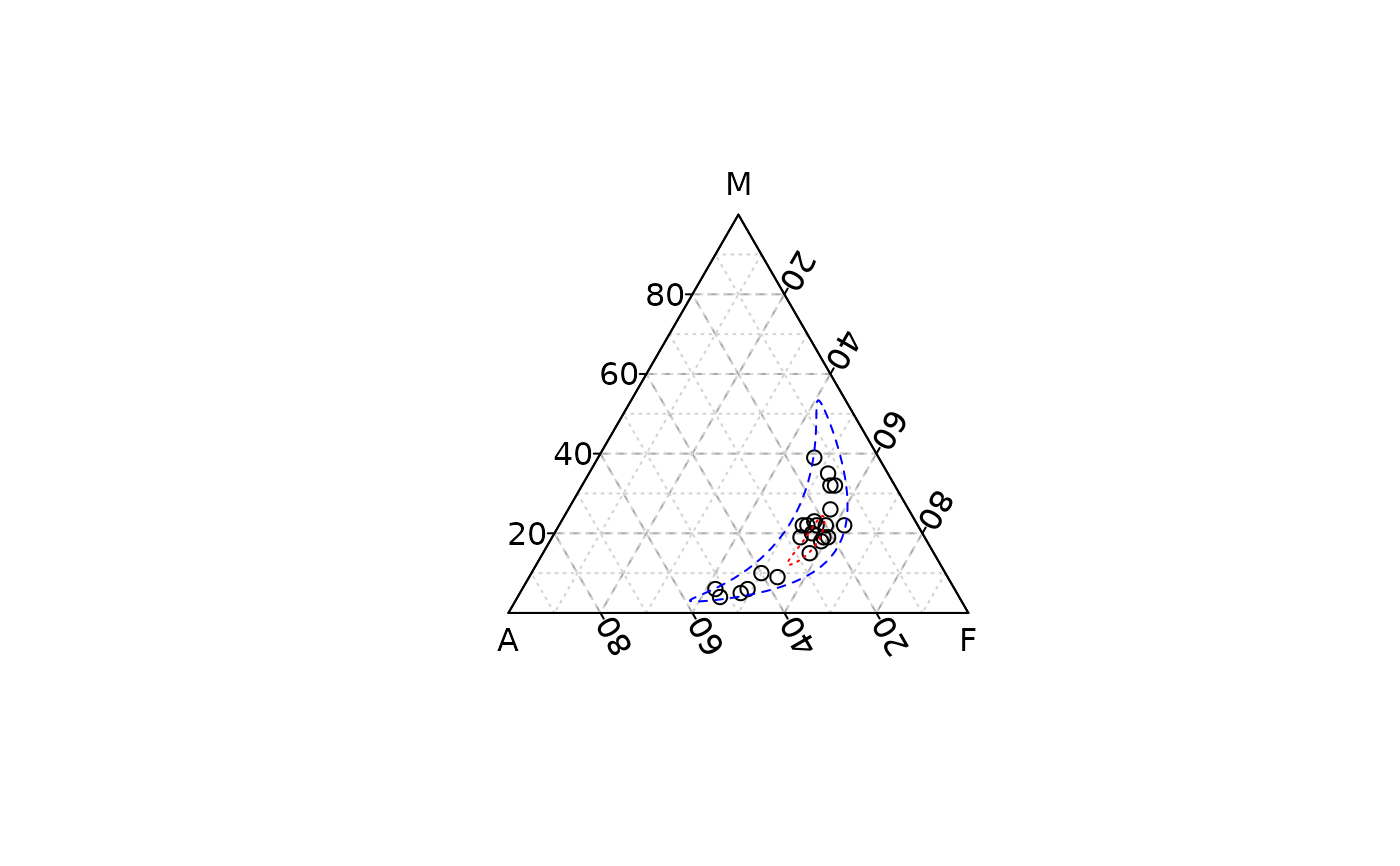Computes and draws a confidence/tolerance ellipse.
Usage
ternary_ellipse(x, y, z, ...)
ternary_confidence(x, y, z, ...)
ternary_tolerance(x, y, z, ...)
# S4 method for class 'numeric,numeric,numeric'
ternary_ellipse(x, y, z, radius = 1, ...)
# S4 method for class 'ANY,missing,missing'
ternary_ellipse(x, radius = 1, ...)
# S4 method for class 'numeric,numeric,numeric'
ternary_confidence(x, y, z, level = 0.95, ...)
# S4 method for class 'ANY,missing,missing'
ternary_confidence(x, level = 0.95, ...)
# S4 method for class 'numeric,numeric,numeric'
ternary_tolerance(x, y, z, level = 0.95, ...)
# S4 method for class 'ANY,missing,missing'
ternary_tolerance(x, level = 0.95, ...)Arguments
- x, y, z
A
numericvector giving the x, y and z ternary coordinates of a set of points. Ifyandzare missing, an attempt is made to interpretxin a suitable way (seegrDevices::xyz.coords()).- ...
Further arguments to be passed to
graphics::polygon().- radius
A
numericvector specifying the scaling of the half-diameters.- level
A
numericvector specifying the confidence/tolerance level.
Details
Ellipse coordinates are computed after an isometric log ratio transformation of the original data.
See also
Other statistics:
ternary_contour(),
ternary_density(),
ternary_hull(),
ternary_mean(),
ternary_pca()
Examples
## Ellipses
## Data from Aitchison 1986
ternary_plot(lava, panel.first = ternary_grid(5, 10))
ternary_tolerance(lava, level = 0.95, border = "blue", lty = 2)
ternary_confidence(lava, level = 0.95, border = "red", lty = 3)

